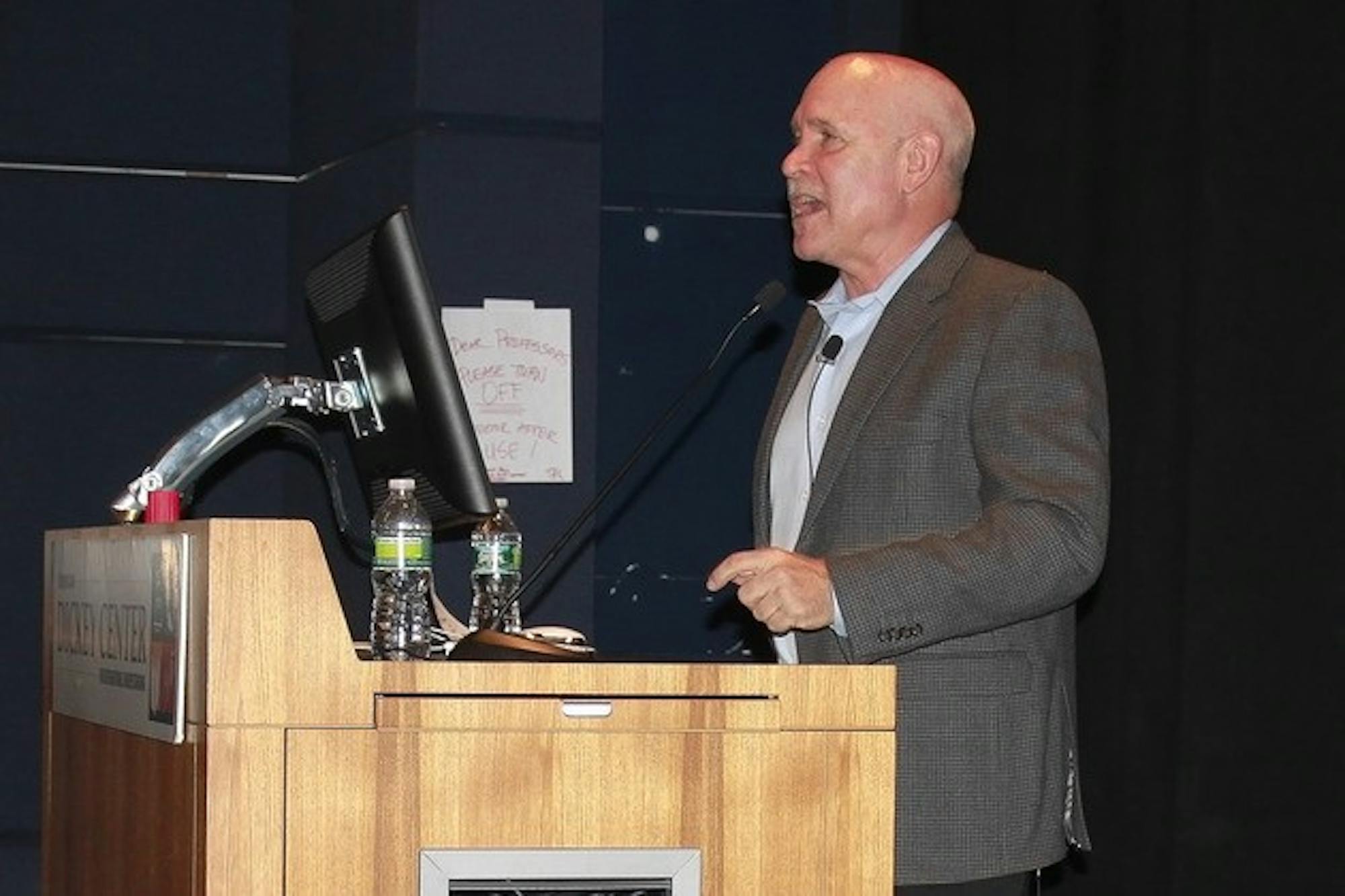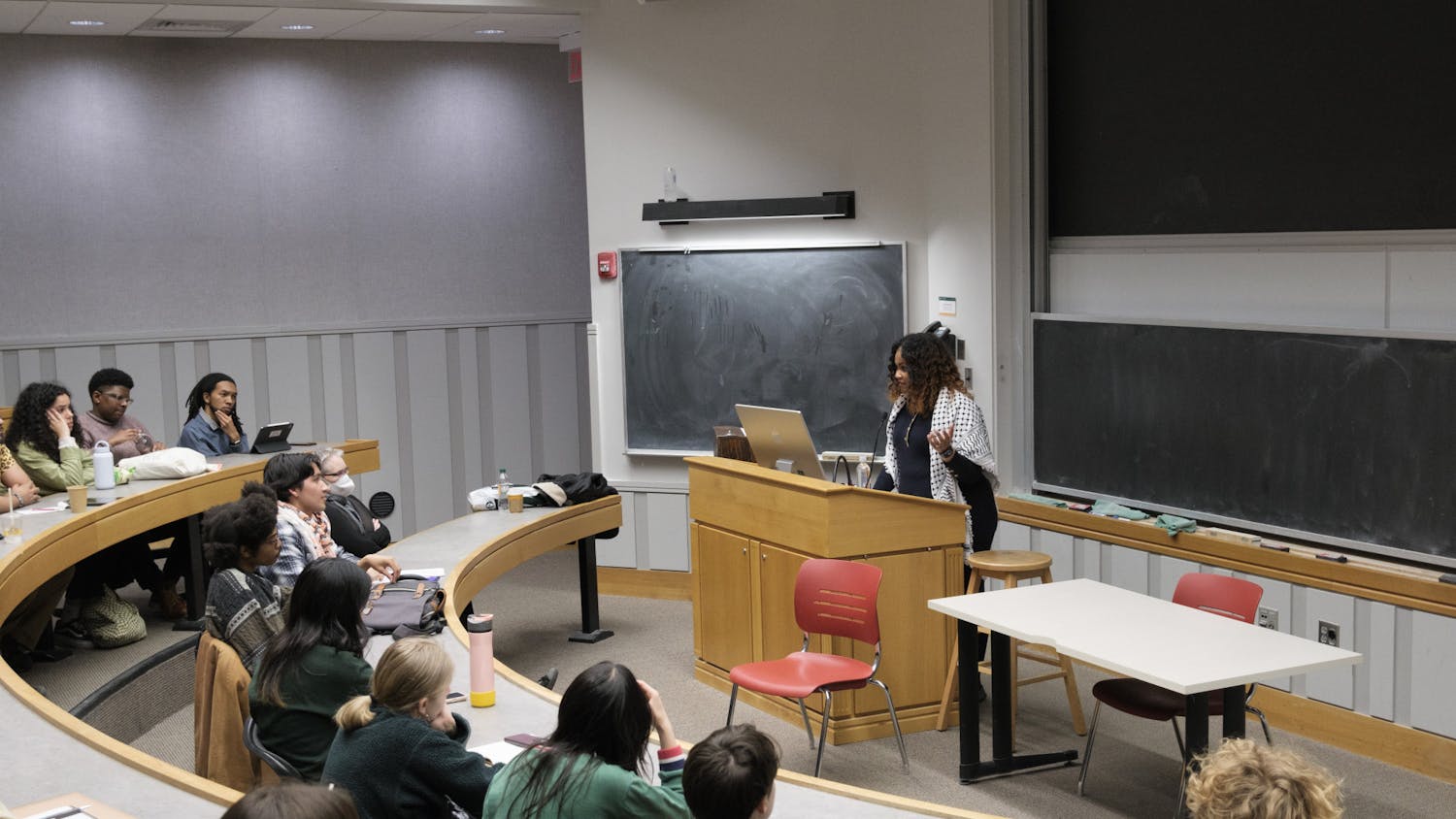McCurry said his work is driven by an interest in people and the places they live in.
"I like human behavior how we relate to each other and the environment," he said. "I like places that will take me to another place, visually and culturally. I want to be transported."
McCurry presented photographs spanning many long term assignments, including some from a feature on monsoons in Southern Asia. Other examples of his early work include photos of the Lebanon civil war, various Indian cities and Buddhist monks, monasteries and places of worship.
McCurry said he shot the last roll of Kodachrome film ever made, using the 36 frames to photograph everyone from Robert DeNiro in his native New York to Indian nomads, whom he chose because they, like Kodachrome film, were vanishing.
McCurry's photojournalism career began in what he described as an obscure newspaper outside of Philadelphia.
"To start out my photography career shooting check passings, chamber of commerce meetings and women's clubs was not what my ambition was," he said.
Instead of remaining in an unsatisfying career, McCurry decided to save money and travel, starting with a trip to India and relying on affordable accommodation and transportation.
The acclaimed photojournalist said his current work has been physically demanding and dangerous.
On one assignment, he waded through water up to his chest for days to capture the daily lives of Indians during monsoon season, facing the constant threat of infection. On another occasion, McCurry and his assistant were attacked by a group of men who objected to being photographed at a monsoon ceremony in India. The attackers pushed both of them and all of their equipment underwater.
As he shared his photographs, McCurry recalled not only the story surrounding the photograph, but also the entire lives of the individuals depicted. After following an old woman with a severe hunchback who he wished to photograph for a few minutes, McCurry said he spoke to her and quickly learned more.
"We actually started talking to her, and she turned out to be this amazing woman," he said. "She was so generous of spirit and such a fortitude and a sense of humor, and I thought, This is really an incredible human being.' It was quite a profound situation for me."
McCurry described how he learned the story of Sharbat Gula when he first photographed her at age 12 in 1984 and returned to meet her again on an assignment for National Geographic in 2002. It took days to track her down, but a few fortunate encounters, including locating her teacher from the refugee camp she stayed in near the Pakistani border, eventually led McCurry and his team back to her, and he photographed her again for a more comprehensive magazine feature.
Some of McCurry's other photographs capture the daily lives of citizens around the world. McCurry said he gravitates towards photographing couples or people asleep in particular.
McCurry visited the College at the request of his longtime friend and photojournalist James Nachtwey, the College's inaugural Roth Distinguished Visiting Scholar.
"We started our careers around the same time, and were kids together, professionally," Nachtwey said. "I've seen his work evolve through the years into something that is so unique and special and powerful, that I thought it would be a great thing if he came up here and shared it."
Photojournalism raises awareness of global issues by presenting a part of the world students might not otherwise see, Varsha Sundar, who attended the lecture, said.
"I think the photographs are very poignant and very evocative of poverty and what peoples' lives in India are really like," Sundar said. "I think he does what photojournalism is supposed to do in showing people how the rest of the world lives."




